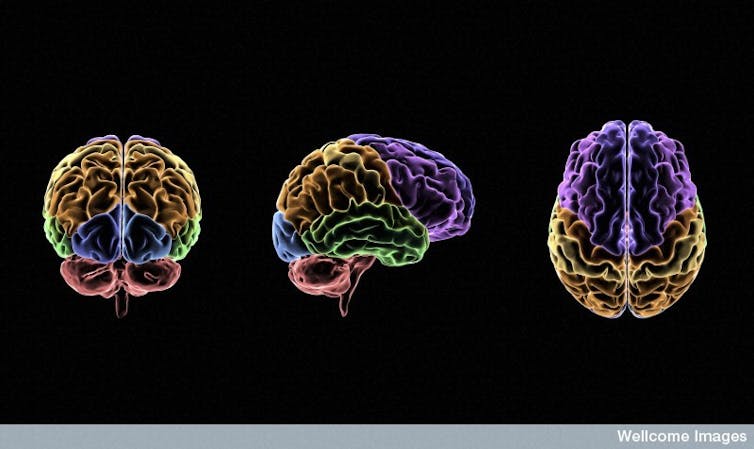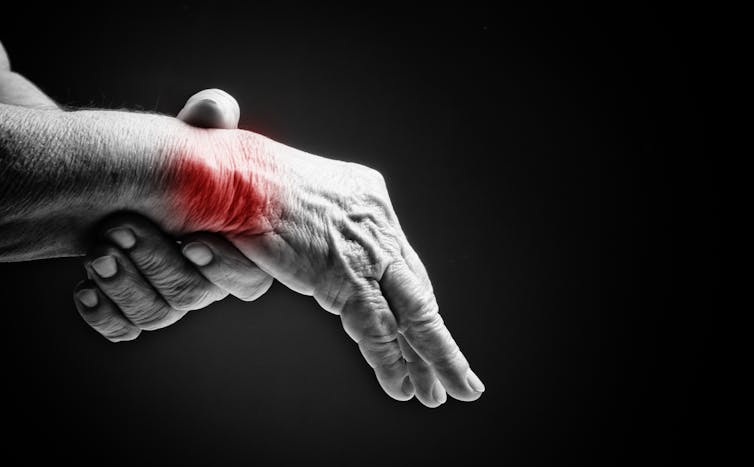A recent study by the National Institutes of Health found that more than one in three people in the United States have experienced pain of some sort in the previous three months. Of these, approximately 50 million suffer from chronic or severe pain.
To put these numbers in perspective, 21 million people have been diagnosed with diabetes, 14 million have cancer (this is all types of cancer combined) and 28 million have been diagnosed with heart disease in the U.S. In this light, the number of pain sufferers is stunning and indicates that it is a major epidemic.
But unlike treatments for diabetes, cancer and heart disease, therapies for pain have not really improved for hundreds of years. Our main therapies are non-steroidal anti-inflammatory drugs (NSAIDs) like ibuprofen or aspirin, which are just modern versions of chewing on willow bark; and opioids, which are derivatives of opium.
In 2012 259 million prescriptions for opioids were filled in the United States. It is not clear how many of these prescriptions were for chronic pain. And indeed, new CDC guidelines on the use of opioids to treat noncancer chronic pain caution physicians to consider the risks and benefits of using opioids when prescribing them to patients.
The fact is, however, that opioids are used to treat chronic pain not because they are the ideal treatment, but because for some patients, despite their drawbacks, they are the most effective treatment available at the moment.
The problem, as I see it, is this: we are not investing enough in researching and teaching what causes pain and how to treat it.
Pain can have a purpose
I study the processes that trigger and maintain chronic pain. One of the first things I teach my students is that pain is a biological process that is critical for life. Pain protects our bodies from injury and by reminding us that tissue is damaged and needs to be protected it also aids in repairing the injuries we do acquire.
This is graphically illustrated by individuals who are congenitally incapable of feeling pain. People with these conditions typically succumb to infections or organ failure at a young age due to multiple injuries that go unattended. Because they cannot feel pain, they never learn to avoid hazards, or how to protect still-healing injuries.
For the most part, physicians and scientists are not particularly concerned with pain from everyday bumps, bruises and cuts. This type of acute pain typically does not require treatment or can be treated with over-the-counter medication. It will resolve itself when the tissue heals.
What concerns those of us who treat and study pain, however, is chronic pain. This type of pain – that can last for weeks, months or even years – serves no useful purpose for survival and is actually detrimental to our health.
There isn’t one type of chronic pain.
In many cases chronic pain persists after an injury has healed. This happens relatively often with wounded veterans, car accident victims and others who have suffered violent trauma.
Chronic pain from arthritis is telling the person about the damage in their body. In this respect it is similar to acute pain and, presumably, if the body healed the pain would subside. But, at the moment, there is no treatment or intervention to induce that healing so the pain becomes the most troubling aspect of the disease.
Chronic pain can also arise from conditions, like fibromyalgia, which have an unknown cause. These conditions are often misdiagnosed and the pain they produce may be dismissed by health care professionals as psychological or as drug-seeking behavior.

How do we experience pain?
The human pain experience can be divided into three dimensions: what pain researchers call the sensory-discriminative, the affective-motivational and the cognitive-evaluative. In acute pain there is a balance between each of these dimensions that allows us to accurately evaluate the pain and the threat it may pose to our survival. In chronic pain these dimensions are disrupted.
The sensory-discriminative dimension refers to the actual detection, location and intensity of the pain. This dimension is the result of a direct nerve pathway from the body to the spinal cord and up into the brain’s cortex. This is how we are aware of the location on our bodies of a potential injury and how much damage may be associated with the injury.
Knowing where it hurts is only part of experiencing pain. Is your injury life-threatening? Do you need to run away or fight back? This is where the affective-emotional dimension comes in. It arises from the pain circuitry interacting with the limbic system (the emotional centers of the brain). This adds an emotional flavor to the incoming pain signal and is part of the fight-or-flight response. This pathway evokes the anger or fear associated with the possibility of physical harm. It also provokes learning so that in the future we avoid the circumstances leading to the injury.
The third dimension, the cognitive-evaluative, is the conscious interpretation of the pain signal, combined with other sensory information. This dimension draws on the different aspects of pain processing allowing us to determine the location and potential severity of an injury and to come up with survival strategies based on all available information.

When it always hurts
The pain sensory system is designed for survival. If a pain signal persists, the default programming is that the threat to survival remains an urgent concern. Thus, the goal of the pain system is to get you out of harm’s way by ramping up the intensity and unpleasantness of the pain signal.
To increase the urgency of the pain signal, the sensory-discriminative dimension of pain becomes less distinct, leading to a more diffuse, less localized, pain. This pathway also amplifies the pain signal by rewiring spinal cord circuits that carry the signal to the brain, making the pain feel more intense.
If there is a threat to survival, the increasing intensity and unpleasantness of pain serves a purpose. But if the pain signal persists from, let’s say, arthritis or an old injury, the increased intensity and unpleasantness is unwarranted. This is what we define as chronic pain.
In chronic pain, as compared to acute pain, the affective-motivational dimension becomes dominant, leading to psychological consequences. Thus suffering and depression are much worse for chronic pain patients than it would be for an individual with an equivalent acute injury.
The multifaceted nature of pain is why opioids are often the most effective agents for both moderate to severe acute and chronic pain.
Opioids act at all levels of the pain neural circuitry. They suppress incoming pain signals from the peripheral nerves in the body, but importantly for chronic pain patients, they also inhibit the amplification of the signals in the spinal cord and improve the emotional state of the patient.
Unfortunately, patients rapidly develop tolerance to opioids, which significantly reduces their effectiveness for chronic therapy. Because of this as well as their addictive nature, potential for abuse and overdose, and side effects such as constipation, opioids are less than ideal agents for treating chronic pain. It is critical that we find alternatives. But that’s easier said than done.
Funding for pain research lags
In 2015 the National Institutes of Health spent US$854 million on pain research, compared to more than $6 billion for cancer. It is no wonder that pain patients muddle through with what amounts to centuries-old therapies.
The competition for funding for pain researchers is intense. In fact, many of my friends and colleagues, all highly experienced midcareer scientists, are leaving research because they cannot sustain the funding necessary to make any significant progress in finding treatments for pain. I, myself, spend up to 30 hours per week preparing and writing research proposals for funding agencies. Yet, less than one in 10 of these proposals are funded. The dearth of funding is also discouraging young scientists from doing pain research. With tenure at major universities becoming more and more difficult to attain, they can little afford to spend all of their time writing research proposals that do not get funded.
In addition, many medical and dental programs in the United States devote as little as one hour in their curriculum to teaching pain mechanisms and pain management. Thus, most of our health professionals are poorly prepared to diagnose and treat chronic pain, which contributes to both the under treatment of pain and the abuse of opioids.
Unrelieved pain contributes more to human suffering than any other disease. It is time to invest in research to find safe effective therapies and on training health care providers to appropriately diagnose and treat pain.

